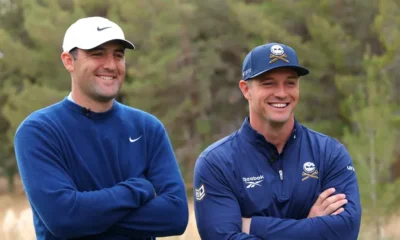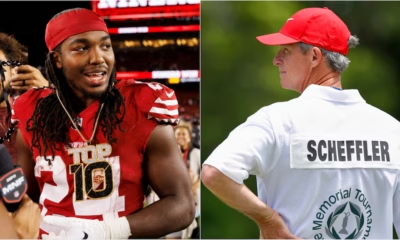Blog
Our Favorite PGA Tour Players to Watch – and Some We’d Skip
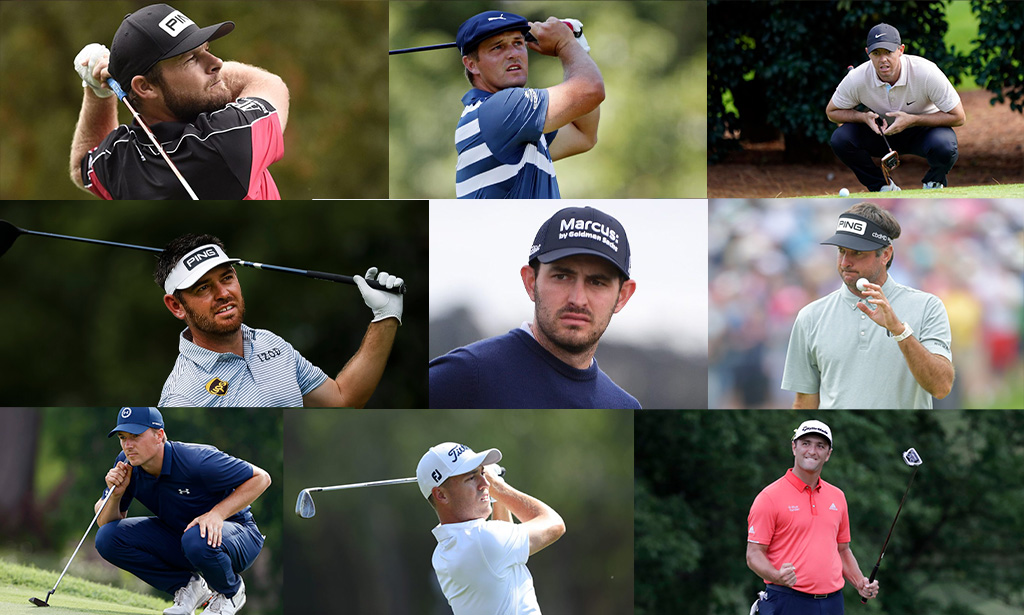
Most PGA Tour events are kind of like a two for one deal. The first two rounds begin on Thursday and golfers must make the cut in order to continue on in the event. This is proceeded by the big weekend excitement that golf fans are sure to be near a television to watch. Plus, that prize money is nothing to turn your nose up at either. This is the pros after all. Top earners are walking away with seven figures, easy.
Of course, all of that big money would not be possible if it weren’t for the network broadcasts. As we’ve especially learned during Covid, televised sporting events hold a lot of value. With even more golf fans tuning in from the comfort of their living room, they are willing to pay for that subscription to be able to tune into the action. The PGA Tour’s relationship with networks is more important than ever. The golfer’s themselves don’t come close to bringing in enough money to even touch the payout that live coverage can provide.
The only pro who could claim that title is Tiger Woods. After his horrific car crash at the beginning of the year, we haven’t seen much of the GOAT. He hasn’t even announced plans to come back any time soon.
Whereas Thursday and Friday’s rounds offer a rapid-fire succession of golf shots to viewers, Saturday and Sunday take on a very different dimension. The focus shifts to those atop the leaderboard. This is where we really get to know the golfers. How their facial expressions tell us a little about what is going on inside their head. The shifts in their body language when they are feeling the pressure. We really get to know their quirks. If a player is doing particularly well, TV cameras will have us invested in on player for well over an hour.
As a disparate audience, we draw conclusions. These are based on our own experiences and despite our lack of professional training. We judge the players based on this persona that we have been deciphering on TV. Because some players are easier to like than others, whether that appeal comes from a swing full of power and grace, an everlasting smile, some crowd interaction or a simple appreciation for one’s intense determination.
As a result, we are able to read the golfer’s thoughts and feelings closer than other professional athletes we analyze from our couch. With some invaluable help from a half-dozen pairs of eyeballs and my own marginal sense of perspective, what follows is an assessment of nine marquee players, each of whom has been assigned a “watchability” rating. Using the Bo Derek scale (10 for best, 1 for worst), our subjects are graded for their on-course deportment and assorted observational factors that add to (or detract from) the viewing experience.
This is not a ranking. Just a subjective look at the men who make the game so interesting.
Rory McIlroy — 9 out of 10

The victory in Vegas last weekend makes Northern Ireland’s finest the perfect leadoff hitter. McIlroy maintains a rapid pace of play that a lot of other golfers on Tour can’t match. He makes some ridiculous course-management decisions at times, but that’s not a negative. When things are going well, he jaunts down the fairway like a 9-year-old kid. When they’re not, he wears it on his face like few others. Sadness, not anger. He is incapable of gloating or showboating. Polite but outspoken. Two steps above gifted but flawed beyond explanation. A wonderful asset to the game and one of the more enjoyable players to watch.
Patrick Cantlay— 6 out of 10

His businesslike approach obviously paid off handsomely in 2021, although I prefer the fiery, fist-pumping version of Cantlay we saw at the Ryder Cup. He is unabashedly slow on the greens, and that shuffle of his feet over a putt can leave a fella feeling seasick, but he holes so many bombs that you feel thankful he won’t need another 90 seconds to knock in the next one.
Jordan Spieth — 5 out of 10

He talks to his golf ball more than he talks to his wife, or anyone else, for that matter. This typically happens as his ball sails off and he sees that it is most certainly not headed in the direction he intended. Tiger Woods has been found guilty of the same crime, but his ball rarely disobeyed his command. Spieth is probably the most verbally animated player on the Tour, which certainly can grate on a viewer’s nerves after a while. That said, his short game alone is reason enough to tune in and enjoy.
Tyrrell Hatton— 8.5 out of 10

When Sergio Garcia gets angry, his behavior is considered petulant, mainly because it is. Hatton’s temperamental outbursts qualify as an amusing form of self-abuse. He becomes so unhappy with himself that he appears ready to quit the game, then makes three consecutive birdies and breaks out the most apologetic grin known to golfkind. If England’s most tenacious grinder ever takes to fatherhood, you can bet your life his kids will behave themselves when daddy’s home.
Happy 30th birthday to the always entertaining @tyrrellhatton. May the mics get hotter as Tyrrell gets older. pic.twitter.com/velVJ40biW— Skratch (@Skratch) October 14, 2021
Bubba Watson — 3 out of 10

You don’t need a degree in psychology to know how Bubba’s day is going. When he’s missing putts, which isn’t all that uncommon, Watson’s dramatic reactions come with a level of authenticity that would have inspired Sir Laurence Olivier. Astonishment. Bewilderment. Injustice. Watson’s collection of grim faces are the stuff of a thousand conspiracies, but the big fella can still shape his ball like nobody’s business. Don’t cry for Bubba. He’ll probably miss one from the same distance on the next hole.
Louis Oosthuizen — 8 out of 10

Beyond owning the smoothest move in every town he visits, the gentle South African has taken his close-but-no-cigar status like a man. And thank goodness, because his career of late has been plagued by a severe stogie shortage. He’ll never be a fan favorite because he doesn’t do cartwheels after making a 15-footer and he doesn’t win tournaments — he’s still 0-for-America — but Oostie is an under appreciated, overlooked commodity from a country that hasn’t exactly been burning up the world stage in recent years. Think of him as the anti-Bubba.
Bryson DeChambeau — 1 on some days, 10 on others

Oh, where do we start? He drives it 380 yards without tearing a pectoral muscle, blames everyone but himself when things go wrong, says some of the dumbest things since Jethro Bodine but still carries himself like the smartest guy in every room he enters. Not for nothing, DeChambeau is also the only active golfer who truly moves the needle—a guy capable of adding 5,000 spectators on any given week or boosting the Tour’s rigid TV ratings. Love him or loathe him, he’s a man of impact. People can’t take their eyes off him.
Justin Thomas— 3 out of 10

Clearly one of the game’s most talented players, Thomas can’t seem to see the forest for the trees. He has won some big tournaments but has taken himself out of others with an allergy to adversity that seems to grow more acute each year. The woe-is-me thing simply doesn’t work at the game’s highest level. He’s a handful and a half when everything’s working, but a lot of bad things happen on a golf course. You deal with them. If JT possessed the inner fight that drives his close buddy Spieth, he’d win six times a year.
Jon Rahm — 9 out of 10

While we’re on the subject of disposition makeovers, let us pay tribute to the year’s most successful competitive lobotomy. Rahm might not have won the U.S. Open if he hadn’t diverted from his hotheaded ways, a change brought on by the birth of his first child and the COVID-19/forced withdrawal that cost him the Memorial, but it’s hard to envision a dude with such a short fuse emerging triumphant at golf’s ultimate battle of attrition. He has always been a big boy physically, but in 2021, Rahm added another 20 pounds of emotional muscle.
He is bright, exceptionally well-spoken and clearly thankful for the opportunity life has given him. Americans have always been hesitant to embrace foreign golfers as one of their own. Rahm is on a brisk pace to become the most popular international player of all-time.
This article originally appeared on SI.com
Blog
Why Your Golf Balls Disappear (and It’s Not the Gophers)

Ah, the vanishing golf ball. A phenomenon as old as the game itself, and one that has baffled, frustrated, and occasionally driven golfers to the brink of madness for centuries. Most theories involve gophers, those furry, subterranean saboteurs with an insatiable appetite for Titleists. Or perhaps a particularly aggressive squirrel, or a flock of unusually organized crows. But I, Ty Webb, have delved deeper into this mystery, and I can assure you, the truth is far more profound, and far more amusing.
Consider, if you will, the golf ball itself. A small, dimpled sphere, designed for one purpose: to be struck with great force and sent hurtling through the air. A life of constant abuse, of being smacked, sliced, and occasionally submerged in murky ponds. Is it any wonder, then, that some of these brave little spheres simply decide they’ve had enough? They yearn for freedom, for a life beyond the confines of the fairway. They dream of rolling unencumbered through fields of wildflowers, or perhaps, for the more adventurous among them, a quiet retirement in the depths of a particularly challenging water hazard.
I’ve seen it happen, you know. A perfectly struck shot, soaring through the air, destined for glory. And then, poof. Gone. Not a trace. No splash, no rustle in the bushes, just an empty space where a golf ball once was. It’s not a gopher, my friends. It’s an escape. A liberation. That golf ball, in its infinite wisdom, has chosen a different path. It has decided that its destiny lies not in the bottom of a cup, but in the boundless expanse of the unknown.

And who are we to judge? We, who are so obsessed with control, with precision, with the rigid rules of the game. Perhaps the golf ball, in its spontaneous disappearance, is teaching us a valuable lesson about letting go. About embracing the unexpected. About the inherent futility of trying to dictate the trajectory of a small, white sphere that clearly has a mind of its own.
So, the next time your golf ball vanishes into thin air, don’t curse the gophers. Don’t blame your swing. Instead, offer a silent salute to that brave little sphere, wherever it may be. For it has achieved what many of us can only dream of: true freedom. And who knows, perhaps one day, it will return, laden with tales of its adventures, ready to impart some profound, dimpled wisdom upon us all.
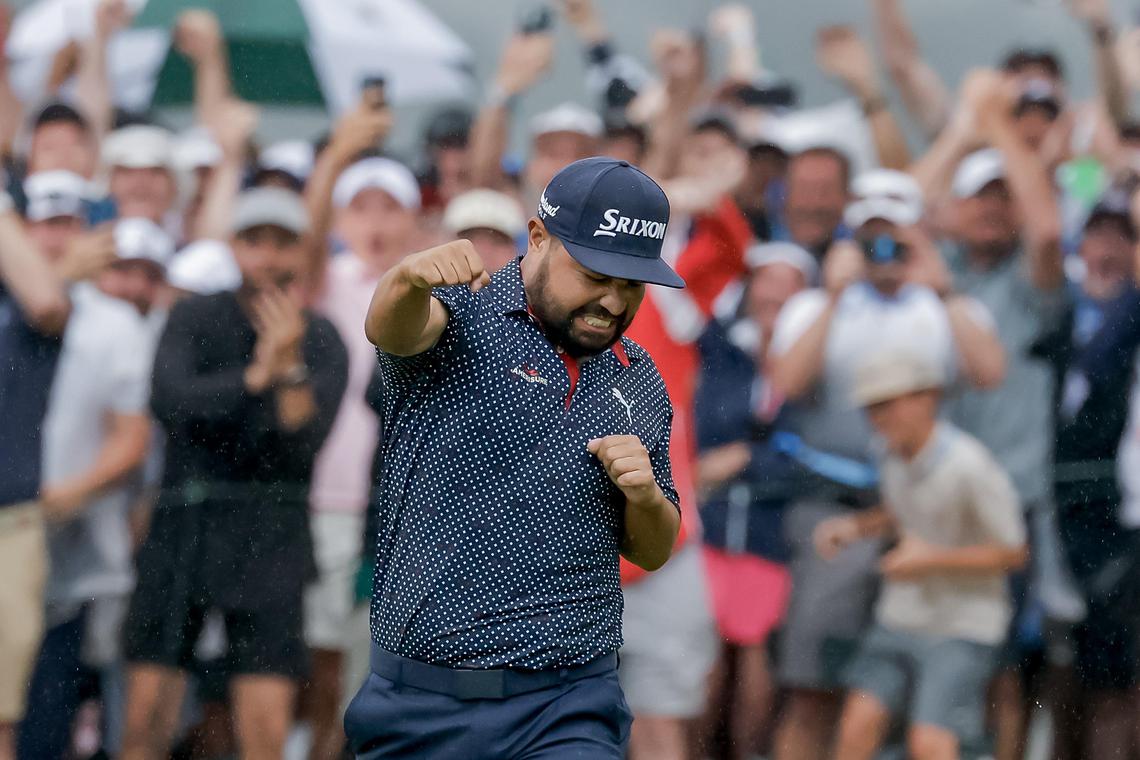
When JJ Spaun stood over a 64-foot birdie putt on the 72nd hole of the 2025 U.S. Open at Oakmont, few could have predicted what would come next. The ball meandered across the slick green, trickling over every contour, picking up speed at the crest, and then—like it had GPS—dropped center cup. Spaun dropped his putter, raised his arms, and the crowd erupted. With that single stroke, he claimed his first major title in one of the most dramatic finishes in U.S. Open history.
But how does Spaun’s putt stack up against other legendary finishes in the tournament’s storied past? Let’s break down some of the most iconic moments and see where this one lands.
1. Payne Stewart – 1999 U.S. Open at Pinehurst
Perhaps the most iconic putt in U.S. Open history came from Payne Stewart, who nailed a 15-footer for par on the 18th to win by one over Phil Mickelson. The pose—fist pump and outstretched leg—has since been immortalized in a statue at Pinehurst. What made it legendary wasn’t just the putt—it was the context: Stewart’s final major before his tragic death just months later.
Verdict: Iconic and emotional. Spaun’s putt was longer, but Stewart’s was more poetic.
2. Tiger Woods – 2008 U.S. Open at Torrey Pines
Woods drained a 12-foot birdie on the 72nd hole to force a playoff with Rocco Mediate—while basically playing on one leg. That tournament went to sudden death after an 18-hole playoff, and Tiger prevailed. This was peak Tiger drama, pain and all.
Verdict: Spaun’s putt was longer, but Tiger’s win was sheer willpower and mystique.
3. Jack Nicklaus – 1972 U.S. Open at Pebble Beach
With a 1-iron shot that hit the flagstick on 17 and a crucial birdie putt on 18, Jack sealed a dominant win. His precision and timing under pressure showed why he’s the GOAT.
Verdict: Not a putt for the win, but a signature finishing statement from Jack. Spaun’s was more electric in terms of pure putter drama.
4. Ben Hogan – 1950 U.S. Open at Merion
Hogan’s 1-iron into the 18th fairway and the par to force a playoff—just 16 months after a near-fatal car crash—remain legendary. He won the playoff and completed one of golf’s great comeback stories.
Verdict: Larger-than-life comeback. Spaun’s putt had more flair, but Hogan’s win was heroic.
5. JJ Spaun – 2025 U.S. Open at Oakmont
Let’s not underestimate what Spaun accomplished. The pressure was immense. He wasn’t the favorite. And on the most treacherous greens in golf, he buried a 64-foot bomb—a putt most players would be happy to lag to within 5 feet—to win the U.S. Open outright.
Verdict: For distance, surprise, and drama, Spaun’s putt may be the most shocking winning stroke in U.S. Open history.
Final Thoughts
JJ Spaun may not have the résumé of a Nicklaus or Woods, but for one Sunday afternoon in June 2025, he created a moment that will live in golf lore forever. Spaun’s putt was longer than Stewart’s, more unexpected than Tiger’s, and more dramatic than any final-hole finish in recent memory.
In terms of pure clutch putting? It might just be the greatest walk-off in U.S. Open history.
Blog
The Zen of the Shank: Finding Inner Peace in Your Worst Shots
Find your inner peace even when you aren’t playing well.
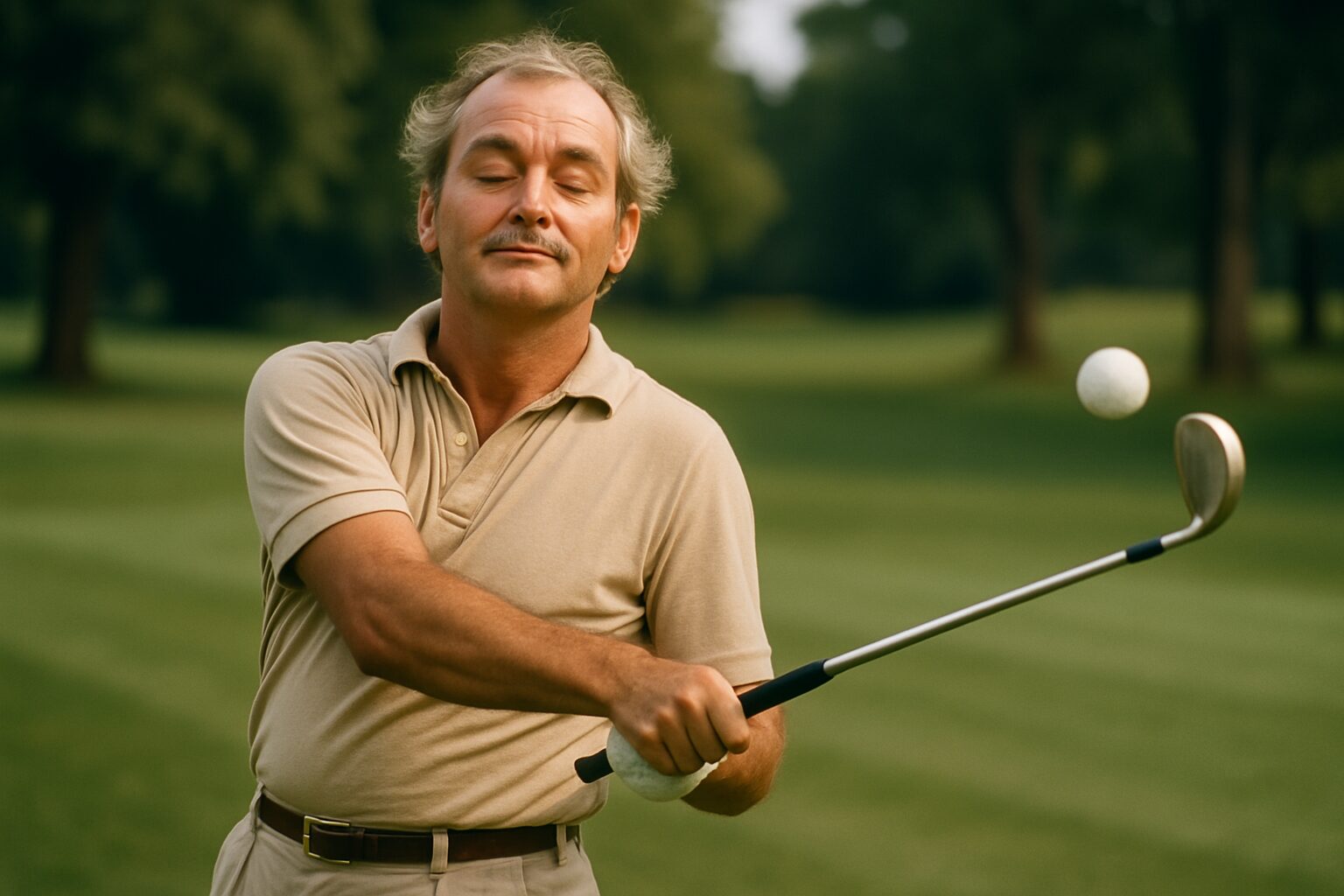
Ah, the shank. That glorious, unpredictable misfire that sends your pristine golf ball screaming sideways, often directly into the unsuspecting shins of your playing partner, or perhaps, with a touch of poetic irony, into the very lake you’ve been trying to avoid all day. Most golfers, bless their earnest little hearts, view the shank as a catastrophic failure, a blight upon their scorecard, a testament to their inherent lack of coordination. They curse, they throw clubs, they contemplate a career in competitive thumb-wrestling. But not I. No, my friends, for I, Ty Webb, have found enlightenment in the humble shank.
You see, the shank is not a mistake; it’s a revelation. It’s the universe’s way of reminding you that control is an illusion, that perfection is a myth, and that sometimes, the most direct path to your goal is, in fact, a wildly indirect one. Think of it as a philosophical detour, a sudden, unexpected journey into the unknown. One moment, you’re aiming for the green, a paragon of precision and intent. The next, your ball is ricocheting off a tree, narrowly missing a squirrel, and landing, by some divine comedic intervention, closer to the hole than your perfectly struck drive ever would have. Is that not a miracle? Is that not a sign that the golf gods, much like life itself, have a wicked sense of humor?
The key, my dear apprentices of the links, is acceptance. Embrace the shank. Welcome it with open arms, like a long-lost, slightly inebriated relative. When that familiar, sickening thwack echoes through the air, do not despair. Instead, take a deep breath. Close your eyes. Feel the gentle breeze on your face. And then, with a knowing smile, open them and observe the chaos you have wrought. Is it not beautiful in its own chaotic way? Is there not a certain freedom in relinquishing control, in allowing the ball to choose its own destiny, however bizarre that destiny may be?
Some say the shank is a sign of poor technique. I say it’s a sign of a vibrant, untamed spirit. A golfer who never shanks is a golfer who has never truly lived, never truly explored the outer limits of their own golfing absurdity. They are content with mediocrity, with predictable trajectories and mundane outcomes. But you, my enlightened few, you understand that the true joy of golf lies not in the score, but in the story. And what a story a good shank can tell.

So, the next time you feel that familiar tremor of a shank brewing, don’t fight it. Let it flow. Let it be. For in the heart of every shank lies a lesson, a laugh, and perhaps, just perhaps, a path to a lower score you never saw coming. After all, as the great philosopher Basho once said, “A flute with no holes, is not a flute. A donut with no hole, is a Danish.” And a golf game without a shank? Well, that’s just not golf, is it?
-

 Product Review6 years ago
Product Review6 years agoThe Perfect Practice Putting Mat Review by Jason Tenzer
-

 Blog4 years ago
Blog4 years agoLoophole Rule Offers PGA Tour Pros a Mulligan
-

 Blog4 years ago
Blog4 years ago2021 Buyer’s Guide: The Top 10 Value Golf Balls For Distance & Feel
-

 Blog4 years ago
Blog4 years agoGolf Marriage Counselor
-

 Blog6 years ago
Blog6 years ago9 Biggest Chokes Of The Past Decade
-

 Product Review6 years ago
Product Review6 years agoTHE ADJUSTABLE IRONS: WALKING STICKS GOLF CLUBS
-

 Blog4 years ago
Blog4 years agoWhat Your Golf Clubs Say About You
-

 Equipment6 years ago
Equipment6 years agoOHK Sports Interview by Jason Tenzer




